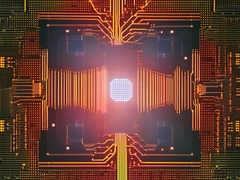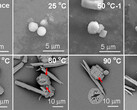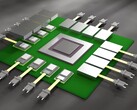We are quickly approaching the limits of plain old silicon as transistors are heading into the sub-2 nm era, and researchers across the world have been trying to find new materials that could better facilitate the adoption of angstrom-size circuitry for more than a decade now. Instead of finding alternative electric semiconductor materials that can shrink beyond 1 nm, some scientists propose the use of circuits that use light instead of electric current. To keep things as compatible with the current transistor tech as possible, scientists managed to combine silicon with photonic emitters and one of the most recent applications for this combo was adapted for AI workloads. SciTechDaily reports that a research team at the University of Pennsylvania led by Nader Engheta has managed to manipulate light waves with silicon in order to perform mathematical computations in AI processors.
Nader Engheta in association with Firooz Aflatouni developed a silicon-photonic chip that is specialized in processing vector-matrix multiplications, which are essential for today’s neural networks and AI applications. For light to propagate through the entire chip, the engineers had to reduce the silicon height by a certain number of nanometers in specific regions. The resulting height variations are then employed to scatter light waves in particular patterns, leading to complex calculations performed at the speed of light.
Apparently, the research team has collaborated with a “commercial foundry” that already adapted this technology for existing production facilities so it can easily be used to produce AI GPU chips. Aflatouni explains that the foundries “can adopt the Silicon-Photonics platform as an add-on and then you could speed up training and classification.”
The use of light waves instead of electric currents can significantly boost processing speeds and energy efficiency, but it can also improve data privacy. As the chip processes far more computations simultaneously, the data does not need to be temporarily stored in RAM, so hacking the system becomes virtually impossible.












